Unlike the protective coating and desiccant methods, the VCI method offers both active and passive corrosion protection. The chemical corrosion process is actively influenced by vapor phase and contact phase inhibitors. The VCI molecules are deposited on the metal surfaces as a monomolecular layer and inhibit corrosion. No steps are necessary to remove the corrosion protection from the packaged goods. In a simplified form, this method works as follows: Modern VCI products are polar, organic or inorganic compounds providing cathodic or anodic protection. They sublime from the associated carrier materials, saturate the enclosed atmosphere and become deposited (adsorbed) on bare metal surfaces as an invisible, monomolecular film. This process allows them to reach places that are otherwise only accessible with difficulty. Carrier materials can be paper, paperboard, films, foams or emitters, but they can also be included in powders, sprays, oils and water. The VCI atmosphere is established largely independently of ordinary temperatures or humidity levels. A closed protective layer is formed between the metal surface and the ambient atmosphere, thus inhibiting the water molecules in the atmosphere from coming into contact with the metal surface. The mode of action and the requirements dictate how VCI materials are used. Modern VCI products provide multi-metal protection. The monomolecular films on the metal surface neutralize the anodic or cathodic electrochemical processes that lead to corrosion. The metal surfaces of the packaged goods should be as clean as possible to maximize the effect of the VCI method. The VCI carrier material should be no further than 30 cm away from the metal surface to be protected. If the distances involved are greater or if the internal volume is larger (plant equipment), additional VCI carrier materials must be used. It makes sense to seal the packaging space in such a way that the VCI molecules cannot escape from the packaging. It is possible to use or further process the goods immediately they are unpacked, because the molecular VCI protective film volatilizes automatically. VCI products should be free of nitrites, heavy metals, halogens, silicates or other substances that are subject to labeling requirements. The protective effect and compatibility issues must be verified in consultation with the manufacturer. VCI products from different manufacturers are not compatible, because the chemical composition of the products varies. VCI products from one manufacturer only should be used: 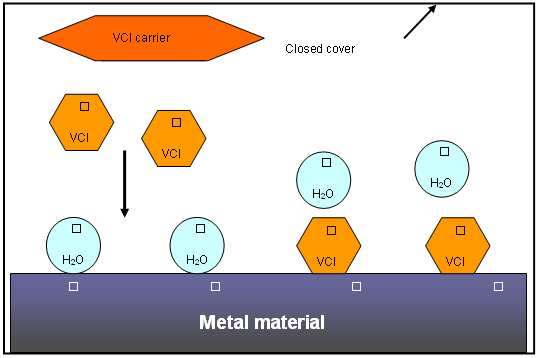
Figure 14: The way in which VCI agents work 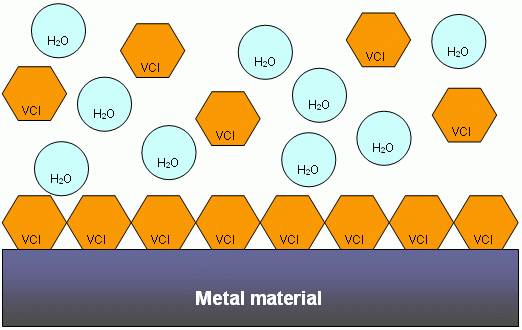
Figire 15: The closed VCI film VCI applications:
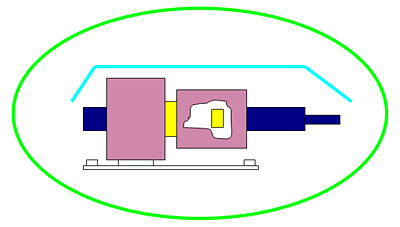
Figure 16: Use of different VCI types. Key to application example: To achieve ideal system conditions, the VCIs used during manufacturing and storage should be the compatible with those used during final protection. 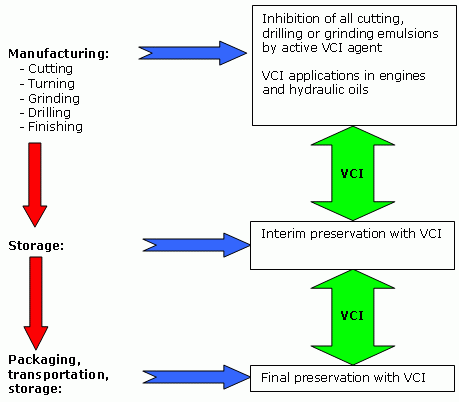
Figure 17: Ideal system conditions as a result of compatible VCI corrosion Summary: Temporary VCI corrosion protection is a key aspect of modern manufacturing, storage and shipping packaging. Universal application coupled with simple handling means that a suitable solution can be found for virtually any task, that has the added advantage that it is easy to use and requires no complex preparations. The majority of VCI products are compatible with the workplace, free of hazardous substances and simply disposed of. The protective function of VCIs has no impact on the electrical, electronic, mechanical or optical properties of the goods that are protected. 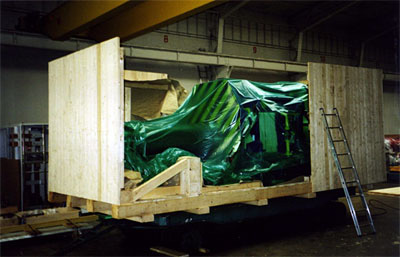
Figure 18: Anticorrosion protection by wrapping in VCI film Unlike normal PE film, VCI film is dyed different colors by the various manufacturers. Films are available which only release VCI molecules on one side. This active side is then marked accordingly. |
| Top of page | Contents |

